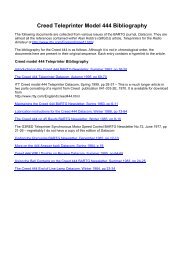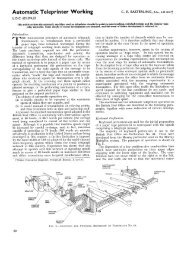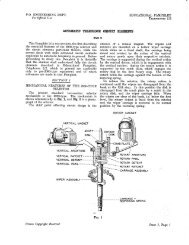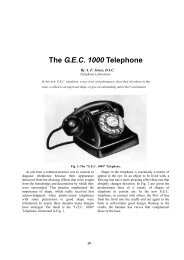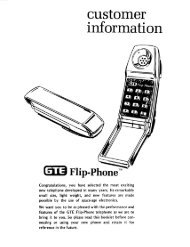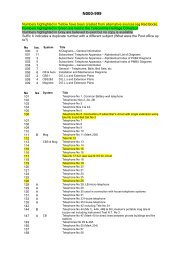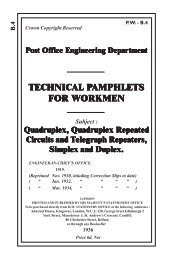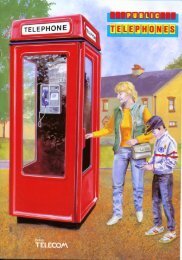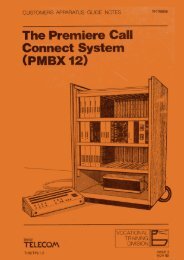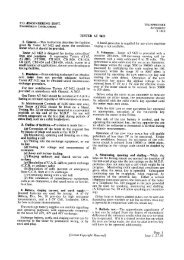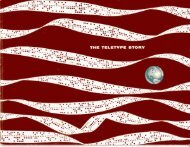TRAFFIC CONTROL TELEPHONE SYSTEMS Circuit - Sam Hallas
TRAFFIC CONTROL TELEPHONE SYSTEMS Circuit - Sam Hallas
TRAFFIC CONTROL TELEPHONE SYSTEMS Circuit - Sam Hallas
Create successful ePaper yourself
Turn your PDF publications into a flip-book with our unique Google optimized e-Paper software.
Page 28<br />
After the ringing period, one impulse is transmitted to line by the calling key<br />
and all selectors are advanced one step then return to the normal position.<br />
A similar sequence is followed in the operation of a selector with a different<br />
code setting.<br />
General Call<br />
When it is necessary to communicate with all stations simultaneously the<br />
Controller operates the General Call key which transmits an uninterrupted train of 17<br />
impulses. These impulses advance all selectors on the line, irrespective of the positions<br />
of intermediate code pins, to the ringing position, thus calling all Way Station<br />
Operators to the telephone. The ringing period and clear down of selectors is identical<br />
to that described for individual calling.<br />
Time Sending<br />
Selectors are set to the time receiving position by an unbroken train of 22<br />
impulses. Again all selectors respond and irrespective of intermediate coding pins<br />
arrive in position 22. Instead of the normal holding pin they are held by the holding<br />
finger engaging with an are which covers four code wheel positions commencing in<br />
position 22. Single impulses received while the selector is held in this position will<br />
cause the code wheel to advance to position 23 and fall back into position 22. In<br />
position 23 there is a contact connected in parallel with the normal ringing contact so<br />
that the momentary contact made with the code wheel contact spring results in short<br />
strokes of the bell thus repeating the time signal code.<br />
As the time arc on the selector covers four code wheel positions it follows that<br />
to clear this condition more than three impulses must be sent to line. Therefore to<br />
restore the selectors to normal, operate any key other than General Call or Time<br />
Sending.<br />
Test Requirements<br />
General. — As a rule, adjustment is not recommended unless the fault is quite<br />
obvious and easy to rectify. If the cause of the failure is not easily seen or corrected,<br />
we recommend that a spare selector be substituted, and the faulty selector tested<br />
with the 4001-B Selector Test Set (described in this book) or returned to Standard<br />
Telephones and Cables Limited for investigation. When a selector is returned, a<br />
statement of the conditions and as nearly as possible, the manner in which the<br />
selector acted, should be sent to assist in determining the cause of the failure.<br />
Extreme care should be taken when any adjustments have to be made.



